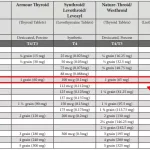Hey there! If you’ve been prescribed Cambia for a migraine attack, you probably have a few questions buzzing around your head—like “Will this drug make me feel worse?” and “How do I keep the nasty side effects at bay?” Good news: you’re in the right place. In the next few minutes we’ll break down everything you need to know about Cambia side effects, from the everyday annoyances to the red‑flag emergencies, and give you practical tips to stay comfortable and safe.
Why Take Cambia
Cambia is the brand name for diclofenac potassium oral solution, a fast‑acting migraine medication that can knock out pain in as little as 15 minutes. It’s especially handy when a migraine has already started—think of it as a rescue squad that shows up just in time.
Typical dosage & how it’s used
The usual Cambia dosage is one 25 mg sachet dissolved in about 4‑6 oz of water. You take it at the first sign of a migraine; do not use it preventively or for cluster headaches. Most doctors advise not to exceed two doses in a 24‑hour period, and you should wait at least 12 hours before the next dose.
Who should avoid Cambia?
- Anyone who’s had a recent coronary artery bypass graft (CABG) – there’s a boxed warning about heart attacks.
- People with a known allergy to aspirin, other NSAIDs, or diclofenac.
- Pregnant women in the third trimester (it can affect the baby’s heart and kidneys).
- Those with uncontrolled hypertension, severe liver or kidney disease, or a history of stomach ulcers.
When in doubt, ask your prescriber for alternatives or a lower FDA‑approved guidance on dosage.
Common Mild Effects
Most Cambia users experience only mild, short‑lived side effects. These are usually easy to manage with a few simple tricks.
What are the most frequently reported mild effects?
According to Drugs.com, the top culprits are:
- Nausea
- Heartburn or stomach upset
- Dizziness
- Transient headache (paradoxical)
- Mild skin rash
Practical tips to manage each mild effect
| Symptom | Quick‑Fix Strategies | When to Call a Doctor |
|---|---|---|
| Nausea | Take Cambia with a light snack (toast, crackers). Sip water slowly. | Vomiting lasts more than 24 h or you can’t keep fluids down. |
| Heartburn | Use an over‑the‑counter antacid 30 min after Cambia. Avoid spicy foods. | Severe pain, vomiting blood, or black stools. |
| Dizziness | Sit or lie down, stay hydrated, avoid driving until you feel steady. | Falls, fainting, or dizziness that worsens. |
| Mild rash | Apply a cool compress; use hypoallergenic moisturizer. | Rash spreads, blisters form, or you develop itching. |
How does Cambia dosage influence mild side effects?
Higher doses naturally increase the chance of stomach upset and dizziness. If you notice more irritation after a second dose, talk to your doctor—sometimes a slight dose reduction or spacing the doses further apart can make a big difference.
Serious Risks
Now, let’s get serious. A tiny fraction of people experience life‑threatening reactions, and recognizing them early can save a life.
Which serious reactions should trigger emergency care?
- Gastrointestinal bleeding: black or tarry stools, vomit that looks like coffee grounds, sudden severe stomach pain.
- Cardiovascular events: chest pain, tightness, rapid or irregular heartbeat, unexplained shortness of breath.
- Severe skin reactions: blistering, peeling, widespread rash, or any sign of Stevens‑Johnson syndrome.
- Liver or kidney warnings: dark urine, yellowing of skin or eyes, swelling of ankles, or a sudden drop in urine output.
Action plan checklist (what to do right now)
- Stop taking Cambia immediately.
- Call 911 or head to the nearest emergency department.
- Tell the medical team you’ve taken Cambia, the dose, and when you started feeling symptoms.
How to reduce the risk of serious side effects?
Prevention beats reaction every time. Here are evidence‑based steps:
- Lowest effective dose: Only the amount needed to stop the migraine. Avoid “just in case” extra doses.
- Regular monitoring: If you need Cambia for more than a few weeks, ask for periodic blood tests (CBC, liver enzymes, kidney function).
- Avoid alcohol & other NSAIDs: Alcohol amplifies stomach‑bleeding risk; mixing with ibuprofen or naproxen is a double whammy.
- Protective meds: Your doctor may prescribe a proton‑pump inhibitor (PPI) if you have a history of ulcers.
Interaction spotlight – common culprits
| Interaction | Effect on Cambia | Management |
|---|---|---|
| Ibuprofen or other NSAIDs | Increased gastrointestinal bleed risk | Use only one NSAID; space dosing if unavoidable. |
| Blood thinners (e.g., warfarin) | Higher chance of serious bleeding | Close INR monitoring; discuss dose adjustments. |
| SSRIs / SNRIs | Elevated ulcer risk | Consider a gastro‑protective PPI. |
These interaction notes are backed by a Healthline review that outlines the most frequently reported drug‑drug clashes.
Talk to Your Doctor
Open communication is the secret sauce to safe medication use. Before your next appointment, jot down a quick symptom log: date, time you took Cambia, dose, what you felt, and any side‑effects. Bring it in—you’ll save time and get clearer answers.
Sample questions for the appointment
- “What warning signs for bleeding should I look for?”
- “Can I safely combine Cambia with my blood‑pressure pill?”
- “If I need a second dose, is it okay to take it within 12 hours?”
- “Would a low‑dose PPI help protect my stomach?”
Remember, your doctor isn’t there to judge you for side effects; they’re there to help you find the safest, most effective way to kick that migraine to the curb.
Real Stories
Stories make the science feel human. Here are a couple of anonymized snippets from people who’ve been there.
Anna, 32: “I took Cambia on a work‑meeting day and felt a wave of nausea. I tried taking it with a piece of toast and a glass of water, and the nausea faded within 30 minutes. The migraine was gone before my next meeting—total lifesaver!”
Mark, 45: “After my first dose I noticed a red patch on my forearm that started itching. I called my pharmacist, stopped the drug, and got a quick skin check. Turns out it was an early‑stage allergic reaction; the doctor switched me to a different class of migraine meds. I’m grateful I caught it early.”
Quick Reference
Side‑Effect Summary
| Category | Frequency | Typical Onset | Management |
|---|---|---|---|
| Nausea, heartburn | Common | Within first hour | Food, antacids, stay hydrated |
| Dizziness | Common | 0‑2 h | Sit down, hydrate, avoid driving |
| GI bleed (black stools, vomiting blood) | Rare‑Serious | 1‑7 days | Stop drug, emergency care |
| Cardiovascular events | Rare‑Serious | Variable | Stop drug, ER, cardiology eval |
| Severe skin reactions | Rare‑Serious | 1‑3 days | Discontinue, see dermatologist |
Dosage & Timing Cheat Sheet
| When to Take | How Much | What to Avoid After |
|---|---|---|
| First sign of migraine | 1 sachet (25 mg) dissolved | Alcohol for 24 h; other NSAIDs for 12 h |
| If pain persists after 30‑45 min | Optional second dose (max 2 per 24 h) | Heavy meals, high‑acid drinks for 2 h |
Wrap‑Up
Cambia can be a game‑changer for migraine sufferers who need fast relief, but like any medication it carries a spectrum of side effects. By knowing what’s common, what’s serious, and how to tackle each, you empower yourself to use Cambia safely and effectively. Keep a symptom journal, stay honest with your healthcare team, and never ignore red‑flag warnings. Most importantly, remember you’re not alone—millions of people navigate these waters every day, and sharing experiences makes the journey easier for everyone.
What’s your story with Cambia? Have you found a tip that works wonders for you? Drop a comment below—we’d love to hear it. And if you have any lingering questions, feel free to ask. We’re all in this together.


















Leave a Reply
You must be logged in to post a comment.